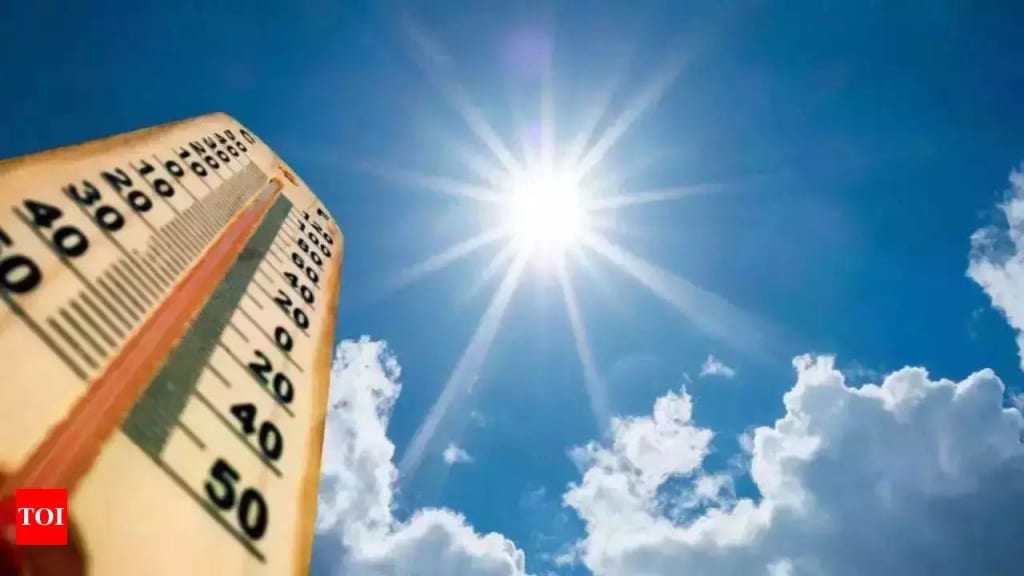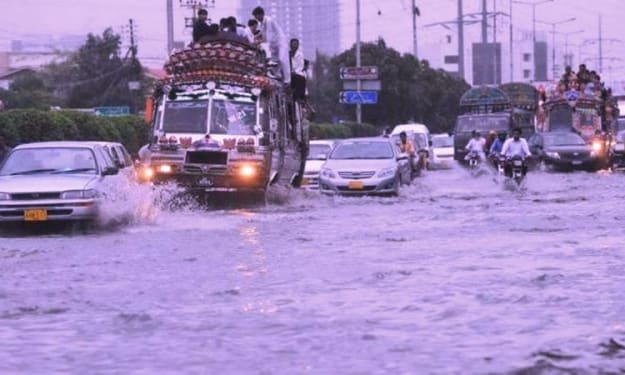
### Heat Waves in South Asia
#### Overview
South Asia, comprising countries such as India, Pakistan, Bangladesh, Nepal, Bhutan, Sri Lanka, and the Maldives, experiences severe heat waves during the pre-monsoon and summer seasons. These heat waves are characterized by prolonged periods of excessively high temperatures, often with significant impacts on health, agriculture, water resources, and overall quality of life.
#### Causes of Heat Waves
**Climate Patterns:**
1. **High-Pressure Systems**:
- Persistent high-pressure systems can trap heat in the lower atmosphere, leading to prolonged periods of high temperatures.
2. **Urban Heat Island Effect**:
- Urban areas tend to be warmer than their rural surroundings due to human activities, dense infrastructure, and reduced vegetation. This effect exacerbates heat wave conditions in cities.
3. **Global Warming**:
- Rising global temperatures due to climate change are increasing the frequency, intensity, and duration of heat waves in South Asia.
**Meteorological Factors:**
1. **Pre-Monsoon Season**:
- Heat waves are most common during the pre-monsoon season (April to June) when the region experiences maximum solar heating.
2. **Delayed Monsoon**:
- A delayed onset of the monsoon can extend heat wave conditions, prolonging the period of extreme temperatures.
#### Impact on South Asian Countries
**India:**
- **Health**:
- Heat waves cause severe health issues, including heatstroke, dehydration, and exacerbation of pre-existing health conditions. Vulnerable populations, such as the elderly, children, and outdoor workers, are most at risk.
- **Agriculture**:
- High temperatures can damage crops, reduce yields, and increase water demand for irrigation.
- **Water Resources**:
- Increased evaporation rates and higher water consumption strain water resources, leading to shortages.
**Pakistan:**
- **Health**:
- Major cities like Karachi experience extreme heat waves, resulting in significant mortality and morbidity. In 2015, a heat wave in Karachi caused over 1,200 deaths.
- **Energy**:
- High temperatures increase electricity demand for cooling, leading to power outages and stress on the energy grid.
**Bangladesh:**
- **Health**:
- Heat waves exacerbate public health challenges, particularly in densely populated urban areas.
- **Livelihoods**:
- The livelihoods of farmers and fishermen are affected due to reduced productivity and increased health risks.
**Nepal and Bhutan:**
- **Health**:
- Though less affected compared to the plains, the Terai region of Nepal and lower regions of Bhutan experience heat waves, impacting health and agriculture.
- **Water Resources**:
- Glacial melt due to high temperatures affects water availability and increases the risk of glacial lake outburst floods (GLOFs).
**Sri Lanka and the Maldives:**
- **Health**:
- These island nations experience heat stress, affecting public health and increasing the incidence of heat-related illnesses.
- **Tourism**:
- High temperatures can impact tourism, a vital sector for both economies, by making outdoor activities less attractive.
#### Mitigation and Adaptation Strategies
**Public Health Measures:**
1. **Heat Action Plans**:
- Implementing heat action plans, such as early warning systems, public awareness campaigns, and setting up cooling centers, can help reduce the health impacts of heat waves.
2. **Healthcare Infrastructure**:
- Strengthening healthcare systems to deal with heat-related illnesses, including training healthcare workers and ensuring adequate supplies of medicines and equipment.
**Urban Planning:**
1. **Green Spaces**:
- Increasing urban green spaces, such as parks and green roofs, can help mitigate the urban heat island effect.
2. **Building Design**:
- Promoting the use of heat-resistant building materials and designs that enhance natural cooling can reduce indoor temperatures.
**Agricultural Practices:**
1. **Drought-Resistant Crops**:
- Promoting the cultivation of drought-resistant and heat-tolerant crop varieties can help maintain agricultural productivity.
2. **Water Management**:
- Efficient water management practices, such as rainwater harvesting and drip irrigation, can optimize water use during heat waves.
**Energy Management:**
1. **Renewable Energy**:
- Expanding the use of renewable energy sources, such as solar and wind, can help meet the increased energy demand during heat waves.
2. **Energy Efficiency**:
- Implementing energy efficiency measures, including the use of energy-efficient appliances and buildings, can reduce the stress on power grids.
#### Conclusion
Heat waves are a growing concern in South Asia, with significant impacts on health, agriculture, and overall quality of life. Addressing this challenge requires a multi-faceted approach, including public health interventions, urban planning, sustainable agricultural practices, and efficient energy management. By adopting these strategies, South Asian countries can better cope with the increasing frequency and intensity of heat waves, protecting their populations and economies from the adverse effects of extreme heat.
About the Creator
Enjoyed the story? Support the Creator.
Subscribe for free to receive all their stories in your feed. You could also pledge your support or give them a one-off tip, letting them know you appreciate their work.






Comments
There are no comments for this story
Be the first to respond and start the conversation.